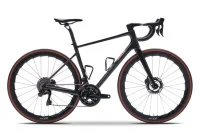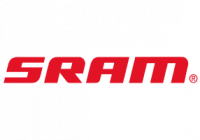Ultra-Light Guru Photon – Installment 2, Wheels
by Jim Weaver, Service Manager, Fit Werx VT
After the frameset, the most important element to a bike’s ride characteristics is the wheels. Good wheels can transform a mediocre bike into a very good bike. Wheels are, unfortunately, an element largely ignored by major manufacturers, who tend to spec wheels on their bikes that simply do not perform at anywhere near the level of the frame and other components, in order to meet certain pricing goals. This is particularly true of their intermediate level bikes, as opposed to the very top end. Many riders will therefore never experience the full potential of their bikes, unless they upgrade the wheels. Wheels are a significant weight variable as well and we wanted to make sure we kept it light while also balancing out well with the ride characteristics of the Guru Photon frameset.
Wheels, like frames, are getting lighter and lighter. If you want the lightest and smoothest riding wheels on the market, you must go with tubulars, and there are really only a few true choices for a bike like this. Ian has been using the Reynolds RZR tubular wheels for well over a year now, without a hitch. These wheels are durable and can stand up to the punishment dished out by Vermont's cratered roads. I managed to get my hands on his pair for a weekend last Fall, and my write-up can be found on the Fit Werx website at https://fitwerx.com/category/new-bike-technology/page/4. Suffice it to say, I loved these wheels. They do everything very well, from handling, comfort and stability, through acceleration, speed, great climbing, and finally, for this bike, they weigh very little. The RZR will make you a better rider than you are and that is hard to put a price on. The front wheel, with skewer, is 420 grams and the rear wheel, again with the skewer, is 580 grams. Without skewers, the wheels are 968 grams for the set, and with skewers, 1,000 grams. It is not unusual for a fully-built bike from a major manufacturer to have a rear wheel that weighs this much on its own!
The RZR is a tubular only wheelset and the rims are 21.25 mm wide, and 46.5 mm deep. Reynolds has not joined the current trend towards wider rims, such as Zipp, HED, and some others. Reynolds feels that this narrower profile helps airflow around the tire and wheel by minimizing separation of the airstream over the wheel. They have a patented “Swirl Lip Generator” (a small raised edge below the braking surface) that helps minimize turbulence and brings the air back into laminar flow as soon as possible. Whatever the reason, the RZR is a fast wheel with great acceleration. When I rode these wheels last year, I expected that because of their very light weight they would be twitchy, particularly when descending. Boy was I wrong. They are very solid and stable. The spokes are N.A.C.A. 0033 airfoil shape, constructed of carbon fiber, and very aerodynamic. The spokes are carbon, and bonded to the rim and hub, so they do not go out of true and are replaceable if broken.
The rear wheel’s spoke pattern is very unique and it is hard to describe. In essence there are three sets of spokes, right, left and sort-of “middle”. This third set is slightly inboard from the drive side set of spokes. The picture may make this explanation a bit more understandable. This spoke ar rangement makes for a stronger, more durable wheel. The Reynolds RZR is a proven performer in all categories and was an easy choice on this bike. As an added bonus, the graphics match the frame…
rangement makes for a stronger, more durable wheel. The Reynolds RZR is a proven performer in all categories and was an easy choice on this bike. As an added bonus, the graphics match the frame…
With the wheel selection out of the way, we turned to tires. Our favorite tubular tire is the Continental Grand Prix 4000SR, at 255 grams each. These are great tires, combining long life, superior flat protection for a high-performance tubular, and excellent ride quality. However, as we were looking to save weight wherever reasonable, we looked to find tires that could save us a few grams. We landed on the Tufo S3 Lite, which weighed in at 210 grams per tire on the scale in the shop. Tufo has versions of this tire that are truly silly-light at 125 grams per tire(!), but these are ultra-narrow with almost no puncture resistance (suitable only for track use). The heavier version we are using is suitable for time trial and road use. These tires have 305 tpi, and thus should provide a comfortable ride too and the rubber compound offers low rolling resistance and good adhesion.
While glue may have been a couple grams lighter, I mounted these tires using Tufo’s Gluing Tape as they would be easier for the rider to work on and be less hassle for him than gluing the tires. For years, tubular tires have had a reputation for being a hassle to properly mount. It is a long ritual, taking three days, applying a layer of glue to the rim and tire, letting that dry over night, applying another layer, letting that dry overnight, before applying another layer of glue on the rim, and finally mounting the tire. Getting the tire straight can be a challenge, and let’s not even mention getting the glue off your hands. All of this scares off many riders who might otherwise appreciate the supple ride offered by tubular tires. Tufo, among a few other manufacturers, has eliminated this drudgery with the Tufo Gluing Tape. This is a two-sided tape that applies easily and quickly, allowing the tire to be mounted straight, with no mess. Apply the tape, mount the tire, and go ride. It takes all of 10 minutes and makes the reservation of using a tubular because they are so hard to mount pretty much a moot point.
A Lightweight Obermayer was the other natural candidate for this build, but the Reynolds with more carbon fiber and a little less Kevlar in the construction has proven a bit more resilient and thus is a perfectly suited match to the Guru Photon’s responsive character. Price: $4500 pair, well over $1000 less than a pair of Lightweight Obermayer..
Next – Drivetrain.









